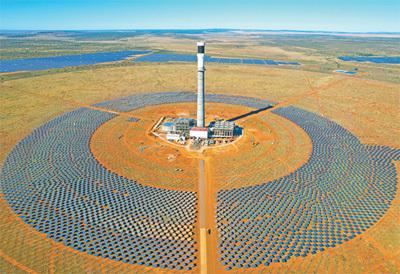Position’╝�Home > education > Content
Africa accelerates its green energy transformation, with sig
Date’╝�2025-03-10 17:51Editer’╝ÜadminRead’╝�’╝�

In recent years, Africa has made significant progress in the field of energy green transformation to address energy shortages and promote sustainable development. The abundant solar, wind, and hydro resources on the African continent are gradually being transformed into "green power" for development. This process is strongly supported by green financing, and industrial support policies continue to be introduced. At the same time, China Africa green cooperation is steadily advancing, injecting strong impetus into Africa's energy transformation. ŌĆ�
The African Union actively plays a leading role by issuing a series of planning documents such as the "African Green Energy Initiative" and establishing the African Renewable Energy and Energy Efficiency Fund, creating favorable conditions for countries to use renewable energy for power generation. The African Development Bank has also taken active action and approved multiple loans for the construction of photovoltaic power plants, wind farms, and green energy projects in countries such as Zambia, Mozambique, Seychelles, and Comoros. In addition, the African Sustainable Energy Fund provides preferential loans for the Dubai solar power project in Burkina Faso, which is part of the "Desert Power Generation" initiative and will promote the development of the solar energy industry in Africa. The International Energy Agency report shows that with a large number of solar projects receiving financing, the installed solar capacity in Africa is expected to increase significantly by 2030. The launch and construction of the Sanda hydropower station in Congo (Brazzaville) marks an important step forward in the development of hydropower in Africa. The project is financed and led by the China Overseas Investment Corporation. ŌĆ�
In terms of industrial policies, the African Union and over 40 African countries have set energy transition goals. Tanzania actively encourages the development of solar energy projects and develops green energy solutions such as community microgrids by reducing value-added tax and tariffs on solar products. Ethiopia is exploring biomass and geothermal power generation on the basis of hydropower and wind power; Uganda has set a goal in its national development plan to increase the sustainable green energy grid access rate to 80% and the proportion of renewable energy to 90% by 2030. Togo plans to add 137 megawatts of clean energy installed capacity, Namibia is advancing green hydrogen and green ammonia refueling station projects, Cape Verde's photovoltaic power station has been put into operation, and Rwanda is seeking international cooperation through the African Energy Expo to promote green energy technology innovation. ŌĆ�
It is worth mentioning that China Africa green cooperation has achieved fruitful results. In recent years, China has implemented hundreds of clean energy and green development projects in Africa, effectively promoting Africa's energy green transformation through technology transfer, project cooperation, and financial support. Botswana Juwaneng 100 MW photovoltaic power station, Uganda Karuma hydropower station, and South Africa Limpopo photovoltaic project have been successively promoted or completed, providing a large amount of clean power for the local area, effectively reducing carbon emissions and electricity prices. African experts generally believe that China is an important partner in the development of clean energy in Africa, injecting strong impetus into Africa's energy transformation. ŌĆ�
The green transformation of energy in Africa is steadily advancing. With the joint efforts of green financing, policy support, and international cooperation, Africa is expected to achieve sustainable development in the energy sector, providing solid guarantees for economic growth and improvement of people's livelihoods.